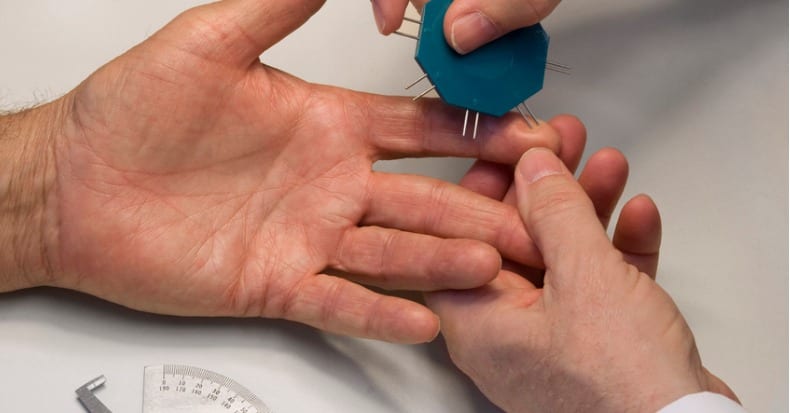When someone is diagnosed with carpal tunnel syndrome (CTS), there seems to be an automatic assumption that surgery is imminent or at least inevitable. However, treatment guidelines for CTS that are intended to be followed by ALL healthcare professionals ALWAYS recommend an initial course of non-surgical treatment, NOT jumping directly to surgery. Unfortunately, evidence-based treatment guidelines are not always followed, and many patients are not given an option for anything other than surgery.
The following is an excerpt from a 2017 Washington State CTS treatment guideline:
All of the following criteria must be met for surgery to be authorized:
- The clinical presentation is consistent with CTS
- The EDS [electrodiagnostic studies] criteria for CTS have been met
- The patient has failed to respond to conservative treatment that included wrist splinting and/or injection
Medical-based non-surgical care for CTS includes: neutral position wrist splints worn at night and (in certain cases) at times during the day (studies report that 30-70% of patients respond favorably within several months of initial wrist splint use); glucocorticoids injections into the carpal tunnel (these can provide short-term relief with about 50% of patients requiring surgery within one year); and forearm and wrist exercises.
Doctors of chiropractic often use a combined approach based on the patient’s unique case, which can include wrist splints and exercise training (as described above) along with manual therapies like manipulation and mobilization on the wrist and elsewhere along the course of the median nerve; physical therapy modalities such as laser therapy, ultrasound, and pulsed electromagnetic field; nutritional counseling, especially anti-inflammatory herbs like ginger, turmeric, and Boswellia; and ergonomic medications such as changing a workstation setup or the grip on tools used to perform job functions.
Studies show that, in most cases, mild-to-moderate CTS can respond to non-surgical approaches just as well as surgery (though without the potential side effects associated with going under the knife), which underscores the importance of seeking care for CTS as soon as possible.
